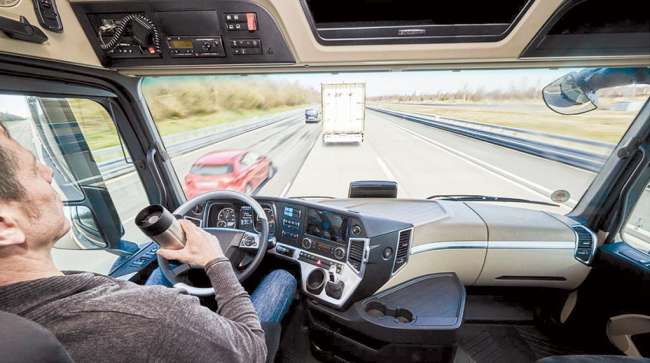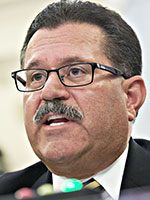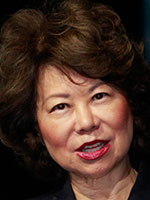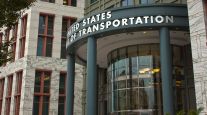Senior Reporter
Federal Regulators, Industry Leaders Review Autonomous Vehicles’ Potential

The utilization of automated technology in trucks could prevent thousands of fatalities along the highways and offer benefits to the national economy, the chief federal trucking regulator said July 12.
“We are fully engaged at this point and part of that, an important part, is dealing with our stakeholders,” Federal Motor Carrier Safety Administration chief Ray Martinez said during a forum on autonomous vehicles at the Automated Vehicles Symposium in San Francisco.

Martinez
“Our work to facilitate automated driving systems in commercial motor vehicles is one way that we can encourage and support innovation,” Martinez added, noting that encouraging innovation is atop Transportation Secretary Elaine Chao’s priorities for her department.
FMCSA is asking academia, industry stakeholders, innovators and users to share feedback about automated driving systems for its national strategy. The agency indicated it is focusing on liability concerns. The aim is to develop a mechanism to determine responsibility in the event of an accident involving an autonomous vehicle.
The agency also is seeking input about challenges with deploying and maintaining the technology ahead of its advance notice of proposed rulemaking for automated commercial vehicles. The notice is scheduled to be published in December.

Chao
Chao addressed symposium attendees two days prior to the FMCSA listening session.
“There are many challenges that must be addressed before this automated future can unfold. Many of the challenges are technical. Some are legal. For example, how does one assess liability for automated vehicles? But the deepest challenges are human,” Chao said in remarks posted on the department’s website. “How will auto- mated vehicles interact with people, not only in cars, but on foot, bicycles or motorcycles? And, this may be the biggest challenge of all: Will the public accept, trust and adopt [automated vehicle] systems?”
American Trucking Associations is a freight stakeholder actively sharing an industry perspective with regulators, as well as policymakers, on Capitol Hill. Mike Cammisa, ATA’s vice president of safety policy and connectivity, told FMCSA officials at the listening forum there is potential in examining lessons learned from the mining and warehousing sectors already using autonomous applications.
Last year, ATA announced its policy view on the emergence of automated driving technologies for the trucking industry. The federation’s position stressed a need to promote safety along surface transportation, promote the flow of commerce and ensure the federal government is solely responsible for regulating the technology, as well as guarantee there are investments in infrastructure and connectivity to facilitate access to the technology.
Allison Cullin, manager of public policy at Amazon.com, told FMCSA officials the online retailer is reviewing the technology from a macro level. “As a shipper, we’re looking at this from the perspective of needing to address the entire supply chain,” Cullin said.
Technology firms, meanwhile, continue to test autonomous vehicles at the state level. Robert Brown, director of public affairs at TuSimple, emphasized at the forum the benefits of establishing partnerships between industry and governments. His firm has been testing autonomous trucks in Arizona, a state Brown said has a “wonderful ecosystem” for perfecting the technology. To ensure a network of autonomous corridors, he stressed a need for crafting a national policy.
On Capitol Hill, Senate legislation advanced by the Commerce Committee that would facilitate the development of self-driving vehicles has yet to be called up on the floor. The bill’s sponsors have not indicated when the legislation would be debated, despite assurances from most lawmakers and the industry that they would strongly support the measure. House counterparts advanced similar legislation last year.
Trucking policy and directives are absent in the House and Senate bills.




